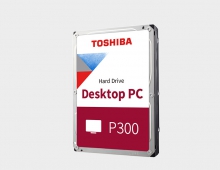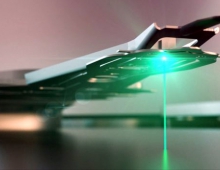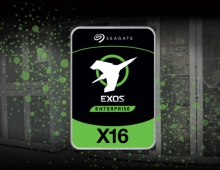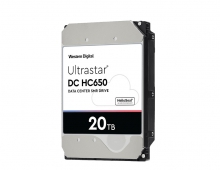
Nikkei Byte Identifies HDD Performance Bottlenecks
Nikkei Byte conducted performance evaluations of hard disks based on benchmark tests.
It found that a disk rotation speed is the most important factor for speeding up actual application processing (refer to graph 1); and remarkably effective, too, is the increase in a cache size that can be implemented as a remedial measure to conceal a delay in processing.
Nikkei Byte chose hard disks mainly among products released between 2003 and 2004, including some 3.5-inch ATA/Serial ATA (SATA) desktop HDDs and 2.5-inch ATA notebook HDDs. As for SCSI server HDDs, old products put on sale before 2002 also were prepared for comparison with the current ATA products.
The testing machine is a PC originally assembled based on the Pentium 4. It was assembled with Intel Corp's "D875-PBZ" motherboard.
Evaluation I: Cache Usage Makes a Difference in Actual Application Processing
First, the basic performance was measured using the "File System Benchmark" of the benchmark software "Sandra 2004" provided by UK SiSoftware Ltd. Accordingly, it was shown that the higher its rotation speed, the higher a product is ranked.
Particularly, among 3.5-inch SCSI hard disks, the "MAU-3147" and the "MAT3300NC," two new HDDs Fujitsu Ltd plans to release in November 2004, achieved brisk performance levels. Their rotation speeds are high: 15,000 rpm and 10,000 rpm, respectively. Each has a higher record density of around 80GB per disk. These features are in fact reflected in the results.
Next, the performance in running an actual application was measured using the "Hard Disk DriveTest Suite" of the benchmark software "PCMark-04" provided by US Futuremark Corp. The result shows degradation of performance by almost 30% for products with a cache size less than 8MB, although these products did not differ much from other groups of products in terms of basic performance. (graph 2) When processing required a higher ratio of writing, the difference in performance of HDDs was magnified more than expected according to the difference in their cache size.
However, it should be noted that various makers allocate a size to a read cache and to a write cache in different ways. So far as this evaluation is concerned, the "HDS-722525-VLAT80" and the "HDS-722525-VLSA80" of US Hitachi Global Storage Technologies (HGST) Ltd proved that the company has a superior scheme for allocating a size. The two products, each with a total cache size of 8MB, use only 7,938KB for their real caching respectively, while HDDs of other makers use more. Nonetheless, HGST's products produced good results. Thus, as might be expected, it has been confirmed that performance in processing an actual application relies on the specific cache control scheme.
Evaluation II: Difference in Read Speed Stability
It is a common practice that all the concentric tracks formed on a disk are put together into 10 to 20 zones where data is recorded by a method called "Zone Bit Recording" (ZBR).
In order to determine a tendency of performance change across zones, this evaluation used the "Disc Inspection Test" of the "WinBench 99 2.0" provided by US Lionbridge Technologies, Inc. With this testing program, a benchmark test was conducted to measure sequential access performance, covering from the most inside zone to the most outside zone.
The result is presented using a graph that is basically in a staircase pattern, meaning a read speed was kept constant within a zone and reduced by millions of bytes per second at a shift of zones. The WD740GD-00FLA0 of US Western Digital Corp is characteristic in that it has a smaller gap, between read speeds at the most inside zone and at the most outside zone (as compared to the others). This is because this HDD of Western Digital has a diameter of about 3 inches instead of 3.5 inches. The company has made the diameter smaller in order to achieve stable rotation of a disk at 10,000 rpm. This idea almost universally applies to HDDs that rotate at 10,000 rpm or more. In this respect, Fujitsu's "MAU-3147" and the "MAT3300NC" are not exceptional cases.
Two 2.5-inch HDD products for notebooks produced characteristic graphs. First, HGST's "IC25N06ATM-R04" could not maintain a read speed at a perimeter as stable as those of other products. As a factor of this phenomenon, an influence of a power saving function might be assumed; but testing with this function set to "off" did not make any difference.
Secondly, the "MP0804H" of Samsung Electronics Co, Ltd presented a graph not in a staircase pattern but a saw-tooth pattern. (graph 3)
This suggests that the number of sectors in each zone is not constant, and there is a good chance that the number of sectors, namely a recording density, changes following a certain pattern. This operation method imposes a heavy burden on the head-positioning mechanism (servo) of this HDD. However, the results of Evaluation I indicate that the "MP0804H" overpowers Fujitsu's "MHT2080AH" that operates at 5,400 rpm in terms of actual application processing, though the latter has somewhat better basic performance than the former. When processing an actual application, it is necessary, in most cases, to access addresses that are not sequentially numbered, and thus the performance appears not to depend on whether data is read from consecutive addresses at a constant speed.
Evaluation III: Serial ATA Suitable for Continuous Read
Finally, Nikkei Byte focused on the difference between the performance of an ATA interface (with a data transfer speed up to 100MB per second) and a Serial ATA interface (up to 150MB per second), using HDDs with the same basic components, such as a disk and a head, but different interfaces.
For the purpose of measuring the maximum, continuous read speed, we selected the benchmark software "HD Tach" of US Simpli Software, Inc, which allows for accurate measurement of performance by bypassing the OS's file system. Consequently, an ATA HDD was outpaced not only by the ST-3160023AS equipped with a Serial ATA controller, but also by the HDS-722525-VLAT80 with an ATA/Serial ATA conversion chip.
Next, for the purpose of measuring actual application processing performance, Nikkei Byte used the Hard Disk Drive Test Suite of the PCMark04. Specifically, measurement was done with three testing programs, however skipping the General HDD Usage that emulates relatively low load operation, such as documentation, gaming, and browsing.
Accordingly, results were obtained: the native Serial ATA ST3160023AS is faster than an ATA HDD, but the HDS-722525-VLSA80 with a Serial ATA bridge chip stands on par with an ATA HDD. (graph 4) This suggests the existence of the influence of overhead bridge chip requests, because processing an actual application is accompanied by segmentized reading and writing of files quite a few times.
From NEAsia Online





















